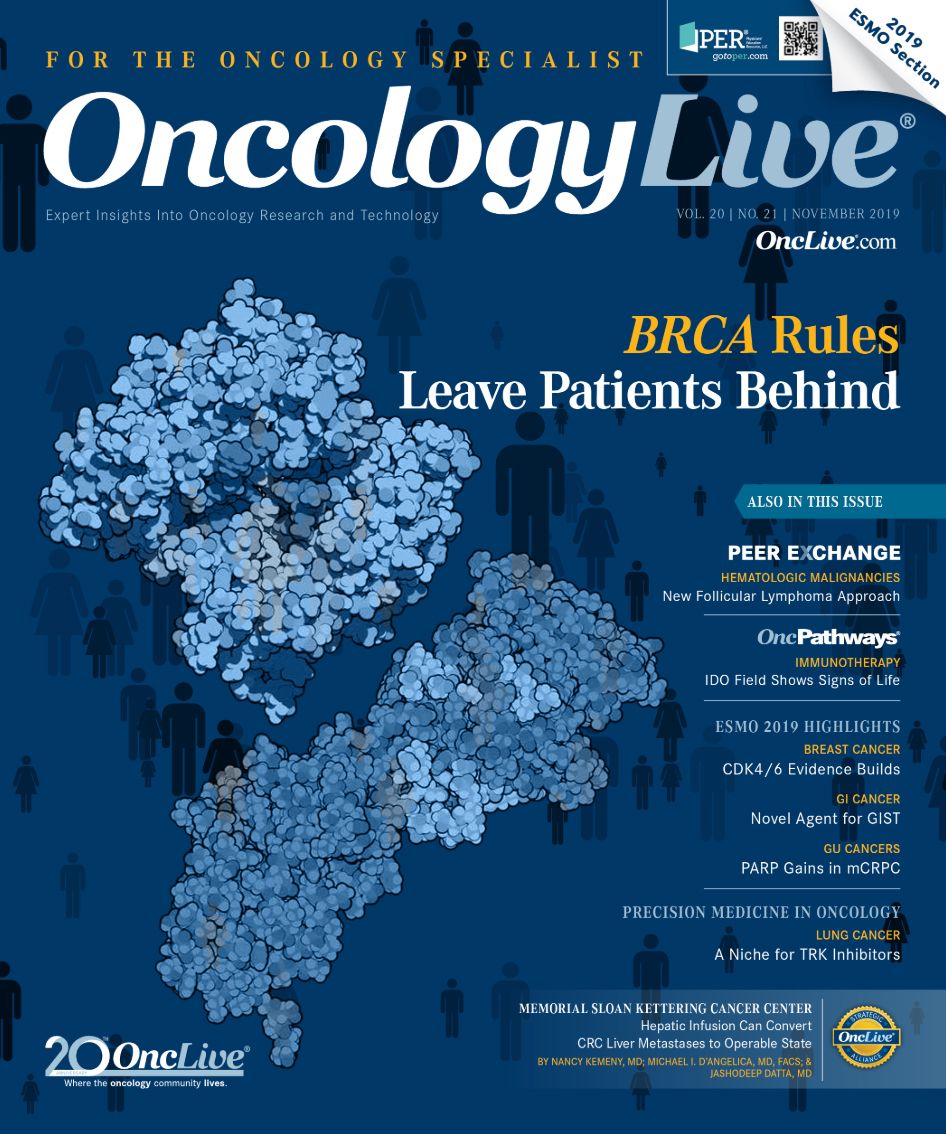Publication
Article
Oncology Live®
Early Adjuvant Chemotherapy Dose Reductions Correlate With Poorer Survival in Breast Cancer
Author(s):
Early dose reductions in a common adjuvant chemotherapy regimen were associated with inferior survival outcomes in a retrospective study of women with intermediate- to high-risk breast cancer.
breast cancer

Early dose reductions in a common adjuvant chemotherapy regimen were associated with inferior survival outcomes in a retrospective study of women with intermediate- to high-risk breast cancer (N = 1302) that evaluated chemo-therapy total cumulative dose (TCD) and early versus late dose reductions.
The study used Alberta Cancer Registry data from women with diagnoses of stage I to stage III hormone receptor—positive/–negative, HER2-negative breast cancer who were treated with 5-fluorouracil/epirubicin/cyclophosphamide followed by docetaxel (FEC-D). Investigators concluded that sustaining TCD ≥85% is important for optimal clinical benefit.
Late dose reductions had “minimal” effect on disease-free survival (DFS) and overall survival (OS), the investigators said.
In their evaluation of TCD thresholds of ≥85% versus <85%, the investigators noted superior DFS at 5 years (85.9% vs 79.2%; P = .025) and superior OS at 5 years (88.8% vs 80.7%; P <.001) for those who received FEC-D at a TCD of ≥85%. A minority of the population (16%; n = 202) received FEC-D at a TCD <85%. The remaining 84% (n = 1100) received the adjuvant chemotherapy at ≥85%.
The differences were consistent in univariate and multivariate analyses. Specifically, a TCD of <85% compared with ≥85% was associated with a hazard ratio (HR) for progression of 1.45 (P = .040) and an HR for death of 1.50 (P = .043). Consequently, medical oncologists should strive to deliver full-dose FEC when prescribing the chemotherapy regimen, investigators said.
Because survival outcomes for the full-dose and LCD cohorts were equivalent, and those for ECD were inferior to both, investigators assessed the effect of a reduction in D using the ≥85% or <85% cutpoint for patients who had full-dose FEC and those who had any reduction in FEC. They sorted patients into 4 cohorts: FEC <100%/D ≥85% early cumulative dose (ECD1), FEC <100%/D <85% (ECD2), FEC = 100%/D ≥85% late cumulative dose (LCD1), and FEC = 100%/D <85% (LCD2).
DFS was significantly different across the 4 groups at 5 years (P = .002) and was higher in the LCD cohorts. For LCD1, the DFS was 85.5%; LCD2, 87.2%; ECD1, 78.9%; and ECD2, 75.2%. OS was also significantly different across the cohorts (P <.001) and was similarly higher in the LCD cohorts at 5 years: 90.0%, 87.9%, 83.5%, and 75.2%, respectively.
The univariate analysis showed a significant, inferior DFS trend for early versus late dose reduction cohorts. This trend persisted in the multivariate analysis but was not significant. The univariate analysis also showed significant, inferior OS for early versus late dose-reduction cohorts. This trend persisted in the multivariate analysis and remained significant (Table).
The worse survival trends in the ECD cohorts prompted the investigators to conclude that late reductions in chemotherapy did not have as much of an effect on DFS and OS compared with early reductions. They said the findings highlight the need to avoid chemotherapy dose reductions early in treatment.
Early dose reductions can be related to toxicities, such as febrile neutropenia, and may be associated with dose delays that result from the secondary use of granulocyte colony-stimulating factors, dose capping for high body surface area relating to obesity, and comorbidities, the authors said.
The retrospective nature of the study rendered accurate evaluation of the reasons for dose reduction difficult, the authors added, but they hypothesized that some of the early dose reductions among the study population were related to dose capping.
Patients eligible for evaluation were those who received a cancer diagnosis between 2007 and 2014 and received a minimum of 4 and maximum of 6 cycles of adjuvant FEC-D, with ≥1 cycle of D.
Table. Five-Year Survival Rates By Dosing Cohorts
The patients who received a TCD ≥85% were more likely to be younger (median age of 54 versus 57 years; P <.001), be premenopausal (44.5% vs 28.2%; P ≤.001), and have fewer comorbidities (84.5% vs 72.8%) than those treated with the lower TCD.
Veitch Z, Khan OF, Tilley D, et al. Impact of cumulative chemother-apy dose on survival with adjuvant FEC-D chemotherapy for breast cancer. J Natl Compr Canc Netw. 2019;17(8):957-967. doi:10.6004/jnccn.2019.7286.

























%20(2)%201-Recovered-Recovered-Recovered-Recovered-Recovered-Recovered-Recovered-Recovered-Recovered-Recovered-Recovered-Recovered-Recovered-Recovered-Recovered-Recovered-Recovered.jpg?fit=crop&auto=format)
%20(2)%201-Recovered-Recovered-Recovered-Recovered-Recovered-Recovered-Recovered-Recovered-Recovered-Recovered-Recovered-Recovered-Recovered-Recovered-Recovered-Recovered-Recovered.jpg?fit=crop&auto=format)
